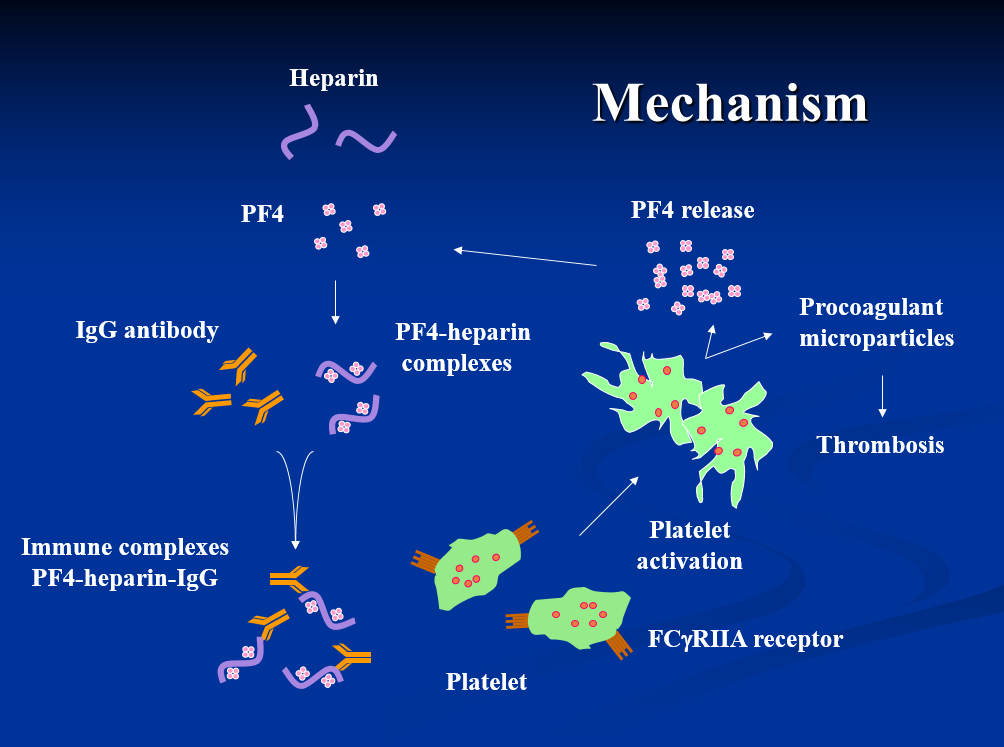HIT: Why Are Some Patients More Susceptible Than Others?
HIT: Why Are Some Patients More Susceptible Than Others?
We are investigating new means for the diagnosis of heparin induced thrombocytopenia (HIT), an immune-mediated response to long-term heparin therapy. This project involves the use of flow cytometry of platelets in order to determine whether some patients are biologically more susceptible to HIT than others via differences in platelet membrane receptors.
 Above is a diagram of the HIT mechanism of action: heparin molecules bind to platelet factor 4 (PF4), forming PF4-heparin complexes. These immunogenic complexes will induce an antibody response and interact with IgG antibodies to form PF4-heparin-IgG immune complexes. These immune complexes stimulate the activation of platelets.
Above is a diagram of the HIT mechanism of action: heparin molecules bind to platelet factor 4 (PF4), forming PF4-heparin complexes. These immunogenic complexes will induce an antibody response and interact with IgG antibodies to form PF4-heparin-IgG immune complexes. These immune complexes stimulate the activation of platelets.